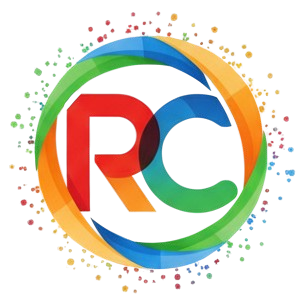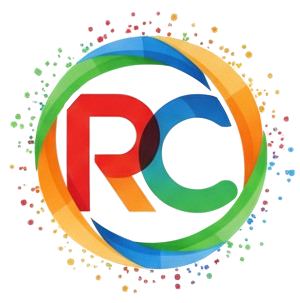Forecasting US Life Science & Analytical Instruments Market Trends: Size, Share, and Dynamics of Demand Expansion
The US Life Science Analytical Instruments Market has been experiencing dynamic growth, fueled by advances in biotechnology, pharmaceutical research, and healthcare innovation. As the demand for precision diagnostics and tailored therapies rises, the life science and analytical instruments sector plays a crucial role in shaping the future of science, medicine, and technology. These instruments—ranging from chromatography and spectroscopy devices to advanced microscopes and next-generation sequencing tools—serve as the backbone for a variety of cutting-edge applications across industries.
What Are Life Science and Analytical Instruments?
Life science and analytical instruments refer to a diverse array of devices used for analyzing biological samples, conducting experiments, and understanding molecular and cellular structures. In life sciences, they assist in genomics, proteomics, cell biology, and drug discovery. Analytical instruments, meanwhile, focus on chemical analysis, material characterization, and quality control across sectors such as pharmaceuticals, environmental testing, and food safety.
Essentially, these instruments provide researchers and professionals with the means to gather accurate data, understand complex biological processes, and ensure regulatory compliance. They are fundamental tools that bridge basic research and practical applications in healthcare, agriculture, and environmental sciences.
Recent Applications Driving Market Growth
The rapid developments in fields like genomics and personalized medicine have expanded the application areas for life science and analytical instruments. For example:
-
Genomic Research: Instruments like next-generation sequencers and polymerase chain reaction (PCR) systems are vital for large-scale genomic studies, which are foundational to personalized healthcare solutions.
-
Pharmaceutical Development: Chromatography and mass spectrometry tools are extensively used in drug discovery, formulation, and quality control to ensure the efficacy and safety of pharmaceutical products.
-
Biotechnology Advancements: Instruments support the production of biologics, including monoclonal antibodies and cell-based therapies, which require precise monitoring of biological processes.
-
Clinical Diagnostics: Real-time PCR and immunoassay systems are being employed for the early detection of diseases, such as cancer and infectious diseases, providing faster and more accurate results than traditional methods.
The COVID-19 pandemic, in particular, accelerated the demand for rapid diagnostics and vaccine development technologies, significantly impacting the adoption of these instruments across laboratories and healthcare facilities.
Emerging Trends and Innovations
Innovation is a key driver in the US Life Science Analytical Instruments Market. Several trends are shaping the future landscape:
-
Automation and AI Integration: Laboratory automation is improving efficiency and reproducibility. Coupling analytical instruments with artificial intelligence (AI) enables predictive analysis, image recognition in microscopy, and faster data interpretation.
-
Miniaturization and Portability: Portable analytical devices are gaining popularity, especially in point-of-care diagnostics and environmental testing. Smaller, handheld devices allow on-site, real-time analysis without the need for centralized laboratories.
-
Single-Cell Analysis: Growing interest in single-cell technologies is pushing demand for more sensitive and precise analytical instruments capable of analyzing individual cells, which has implications for cancer research and regenerative medicine.
-
Sustainability: Manufacturers are increasingly focusing on producing energy-efficient and eco-friendly instruments, reducing the environmental footprint of laboratories and research institutions.
-
3D Bioprinting and Advanced Imaging: The convergence of analytical instruments with bioprinting and high-resolution imaging is opening new frontiers in tissue engineering and regenerative medicine.
Opportunities Across Sectors
The US market offers significant opportunities for companies operating in the life science and analytical instruments sector:
-
Healthcare and Diagnostics: The need for early and accurate disease detection methods, particularly for chronic and genetic conditions, is driving demand for sophisticated diagnostic instruments.
-
Pharmaceutical and Biotech RD: As the pharmaceutical pipeline expands with new therapies, especially biologics and gene therapies, research facilities and manufacturers require advanced analytical tools for development and quality assurance.
-
Environmental Testing: Growing concerns about pollution and environmental sustainability are boosting demand for analytical instruments that monitor air, water, and soil quality.
-
Food and Beverage Industry: Stringent safety regulations and the need for traceability are creating opportunities for analytical instruments in the testing and certification of food products.
-
Academic and Government Research: Increased funding in life sciences research, coupled with collaborations between universities, government bodies, and private enterprises, is fostering a robust demand for advanced instrumentation.
Challenges to Consider
Despite the opportunities, the market is not without its challenges. High costs associated with advanced instruments can be a barrier to adoption, particularly for small and medium-sized laboratories. Regulatory hurdles, technological complexity, and the need for highly trained personnel also present obstacles that industry players must navigate.
Future Outlook
Looking ahead, the US Life Science Analytical Instruments Market is poised for sustained growth. A rising emphasis on precision medicine, increasing RD investments, and the integration of digital technologies are expected to drive innovation and expansion. Companies that focus on user-friendly designs, cost-effective solutions, and sustainability will likely lead the next wave of transformation.
Browse More Reports:
US Life Science Analytical Instruments
US Solid Phase Extraction Market
US Generic Pharmaceuticals Market





